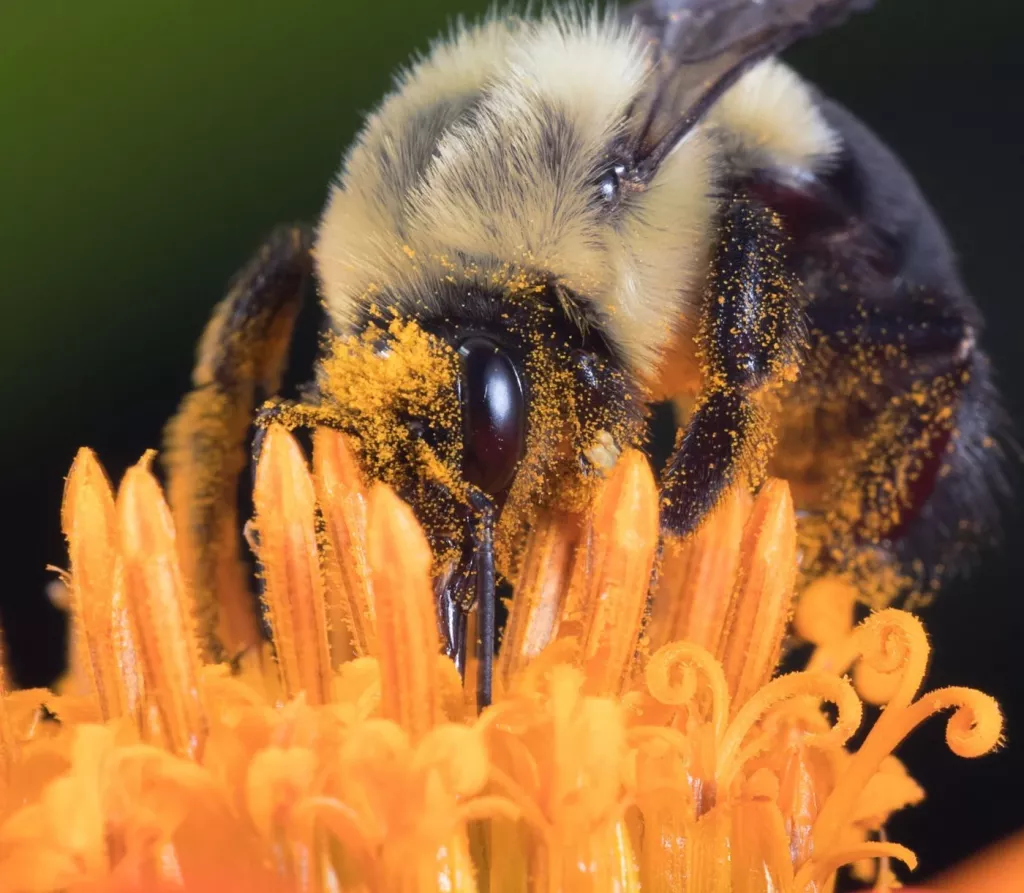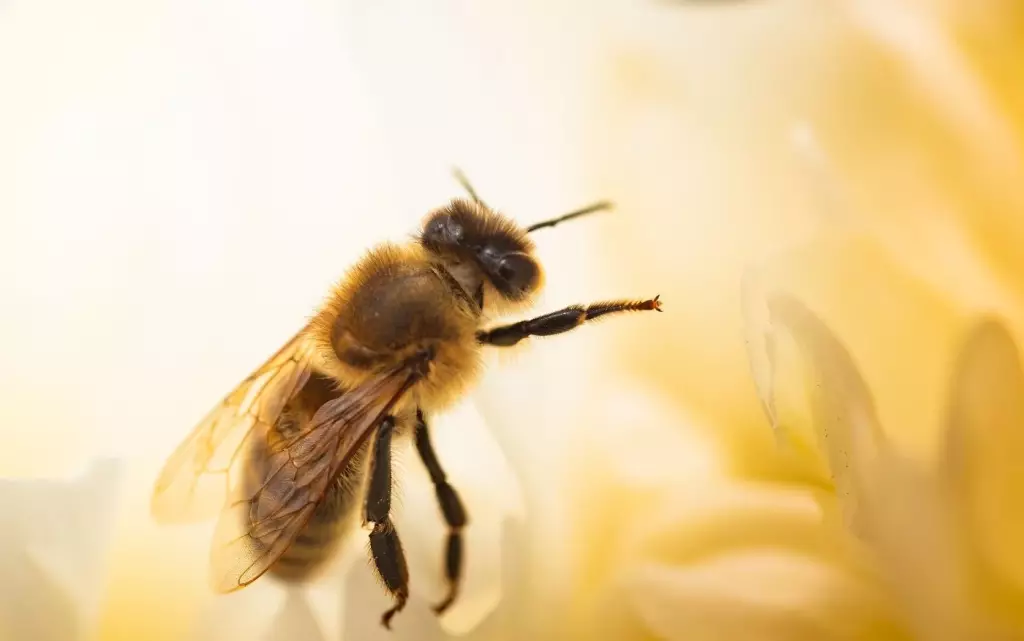Some Bees Can See In the Dark, But Most Can't
Devoid of any light source, humans find it hard to move around and even trip on things when we try to wade through the darkness. But did you know that some bees find it easy to fly even in the dark? In this article, we will explore how some bees have gained the ability to see in the dark, while others cannot.
Nocturnal bee species can see in the dark, such as the Indian Carpenter Bee. Most bee species, however, are diurnal like honeybees, which have reduced vision in the dark. The ability of nocturnal bees to see in the dark is attributed to their enlarged eyes as compared to the diurnal species.
One may wonder if the eye is the only difference between bees that can see in the dark and those that cannot. There's a lot more to discuss below, so keep reading and let the bees shed some light.
Summary
- Bees can see in the dark using their simple eyes called ocelli
- Nocturnal bee species have enlarged ocelli that allow them to see in the dark.
- Most diurnal bee species, like honeybees, have a reduced ability to see in darkness.

On this page:
Can Bees See in the Dark?
Before addressing the hows and whys, the first thing to address is whether bees can see in the dark. Bees can see in the dark using their simple eyes, called “ocelli”, uniquely positioned in a triangular manner on their head. The ocelli are light-collecting structures considered to be the bees' other three eyes aside from their compound eye. The ocelli are positioned as follows: two dorsal ocelli and a central ocellus.
These tiny eyes reflect light and help the bees position themselves correctly relative to the sun. This, therefore, makes it easier for bees to navigate during the day. But ocelli aren’t just for navigation during the day. For nocturnal bee species, the ocelli help them see even in the dark.
Which Bees Can See in the Dark?
Before we delve into the details of the bee's night vision, let us first discuss what kinds of bees can see in the dark.
Bees are categorized into three species based on their time of peak activity:
- Diurnal species – active during the day
- Crepuscular species – active during dusk or dawn
- Nocturnal species – active at night when it is dark.
Generally, most bee species fall under the diurnal category, such as honeybees and bumblebees. With no light source, they will stop flying and dock out in their hives or stay put wherever they are. This is the reason most bees are claimed to be blind during the night.
However, technically speaking, diurnal bees are still able to fly at night, just as we can still walk during the night, but we just opt not to because it's hard to see. Their vision is just reduced at night. Since they find it hard to move, they just spend the rest of the night inside their hives, as it is also much safer from predators.

Some bee species, on the other hand, will only come out when it's dark. They are either crepuscular or nocturnal bee species, most of which are found in the tropics, such as the Indian Carpenter bee.
The distinguishing characteristic that sets nocturnal and crepuscular bees apart from diurnal species is their eyes. Nocturnal and crepuscular species have prominently bigger eyes than diurnal species. Studies suggest that nocturnal species having bigger eyes is an adaptation for them to collect more light while foraging at night. From this, it can be said that some bees can see in the dark.
The Bee's Night Vision Explained
Bees have five eyes in total, two of which comprise the compound eye that is important in bees' vision and color identification. The compound eye is composed of many hexagonal facets that enable bees to have a 360-degree view, meaning that they can simultaneously see all around them, be it above, below, side to side, or in front of them.
The other three eyes of the bees are the simple eyes, collectively known as "ocelli," meaning little eyes in Latin. The ocelli's main function is to provide bees with stability during flight by acting as a light intensity controller to keep them oriented. The ocelli gather light and help bees recognize the ultraviolet markings in flowers, too.
These ocelli are also known to help bees in the dark. Since light is scarce during the night, it has resulted in the evolution of equally large compound eyes and ocelli in nocturnal bees. Aside from that, their three ocelli (which are sensitive to light) are significantly larger relative to body size in species that fly in dim light, compared with the ocelli found on diurnal bees.
In the giant nocturnal Indian Carpenter Bee, the ocelli measure almost a millimeter across, as compared to the ocelli of the similarly sized diurnal species, which are significantly less than half this size. The compound eyes are also a little larger in nocturnal bees, but this is less noticeable.
Why Some Bees Prefer the Dark Nighttime
If most bees are diurnal species and love to work in broad daylight, how come other bees like to work during the nighttime when it's dark? We've rounded up a few reasons why some bees are nocturnal:
Reduced competition
Most bees are diurnal, so the chances of having competition in flower fields are high. At nighttime, the only possible competitors in flower sources are bats and moths, so the nectar and pollen levels in flowers during the night or before the dawn breaks are seamlessly high, which attracts bees to forage during these dark hours.
Safety from predators
Natural predators and parasites usually attack beehives in broad daylight. Nocturnal species are safe from these instances, as some natural bee enemies are diurnal as well.
Preventing loss of water
Scorching heat during the day cannot be prevented, and in dry regions, this can be a problem for bees in such areas. Nocturnal bees, however, have found a way to preserve liquid in their bodies by only flying at night.
Nocturnal flowers
Some types of flowers only bloom at night as well, which makes them the best pair for nocturnal bees. Although nocturnal bees explore different types of flowers, there are certain flower features that the bees favor, such as nocturnal anthesis, high light reflectance, and a strong fragrance.
However, the forms and sizes of flowers visited by nocturnal bees are quite variable; they visit large, zygomorphic, or even disk-like flowers. Nocturnal bees also visit plants with different flowering strategies, like those with mass or steady-state flowering.

Can Bees Attack During Nighttime?
Just because most bees can't see in the dark doesn't mean they can't attack you or put their stingers out to protect their hive. Bees can sting even at night as they do throughout the day when they sense danger.
They will be resting in their homes at night as humans do, but they are very alert. Honeybees even have what they call "guard bees."
It is not the dark hour that stops bees from attacking intruders, but the low temperatures during nighttime. However, it is still not safe to assume that they won't attack if you happen to check on them during dark hours. It's still best to wear protective clothing and use a smoker for safety purposes.
How Can Bees Find Their Way in the Dark?
Fascinatingly, aside from their ability to see in the dark, bees are known to use "memory maps" that enable them to find the exact way home even in the dark. Researchers have been amazed by the fact that bees, whose brains are much smaller than human brains, can memorize convoluted routes of great distances (sometimes even kilometers long) and fly in the same direction with no complications.
Truly, bees are notable creatures despite their small size. They aren't just anything you can bee-little (pun intended).